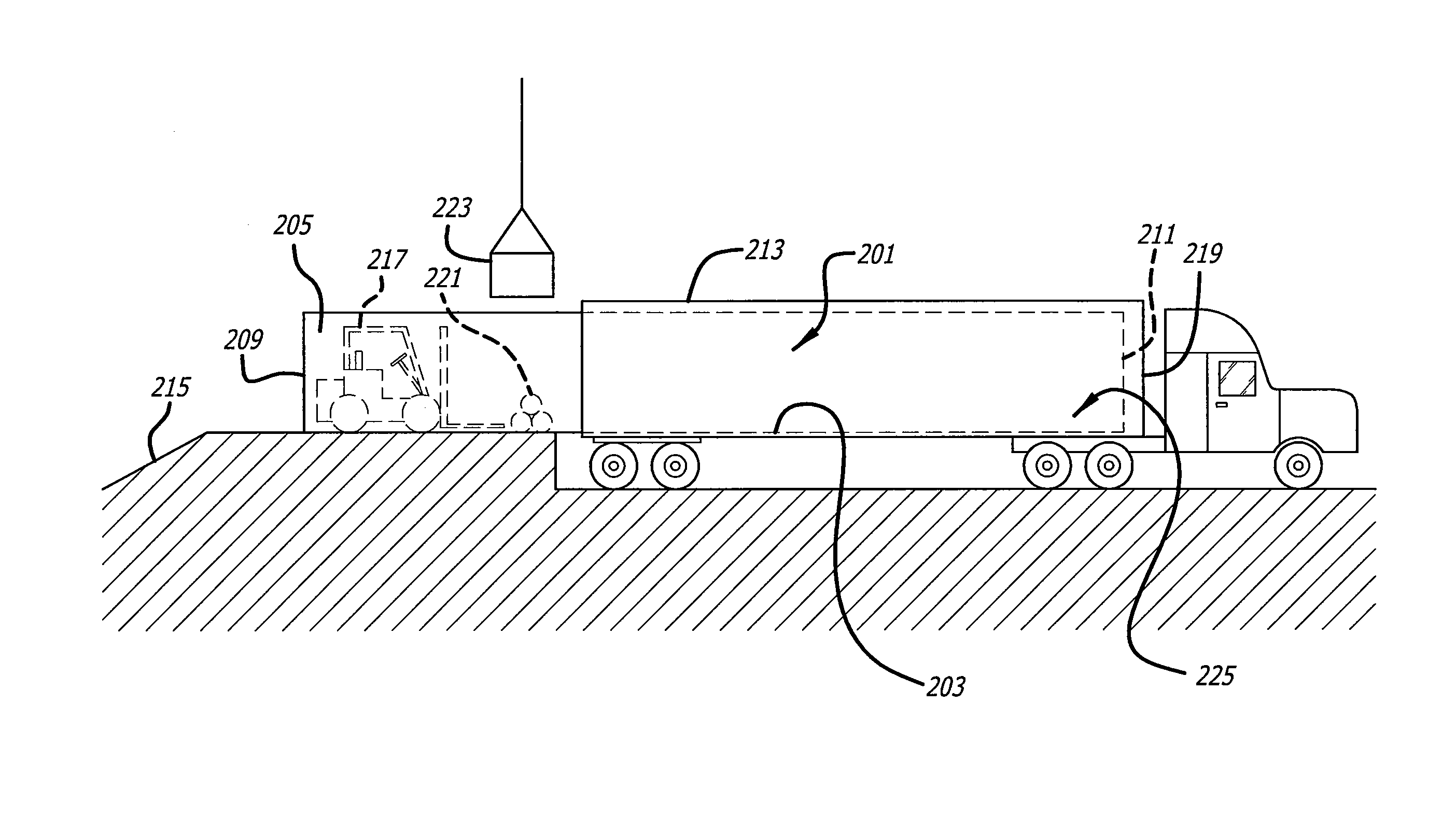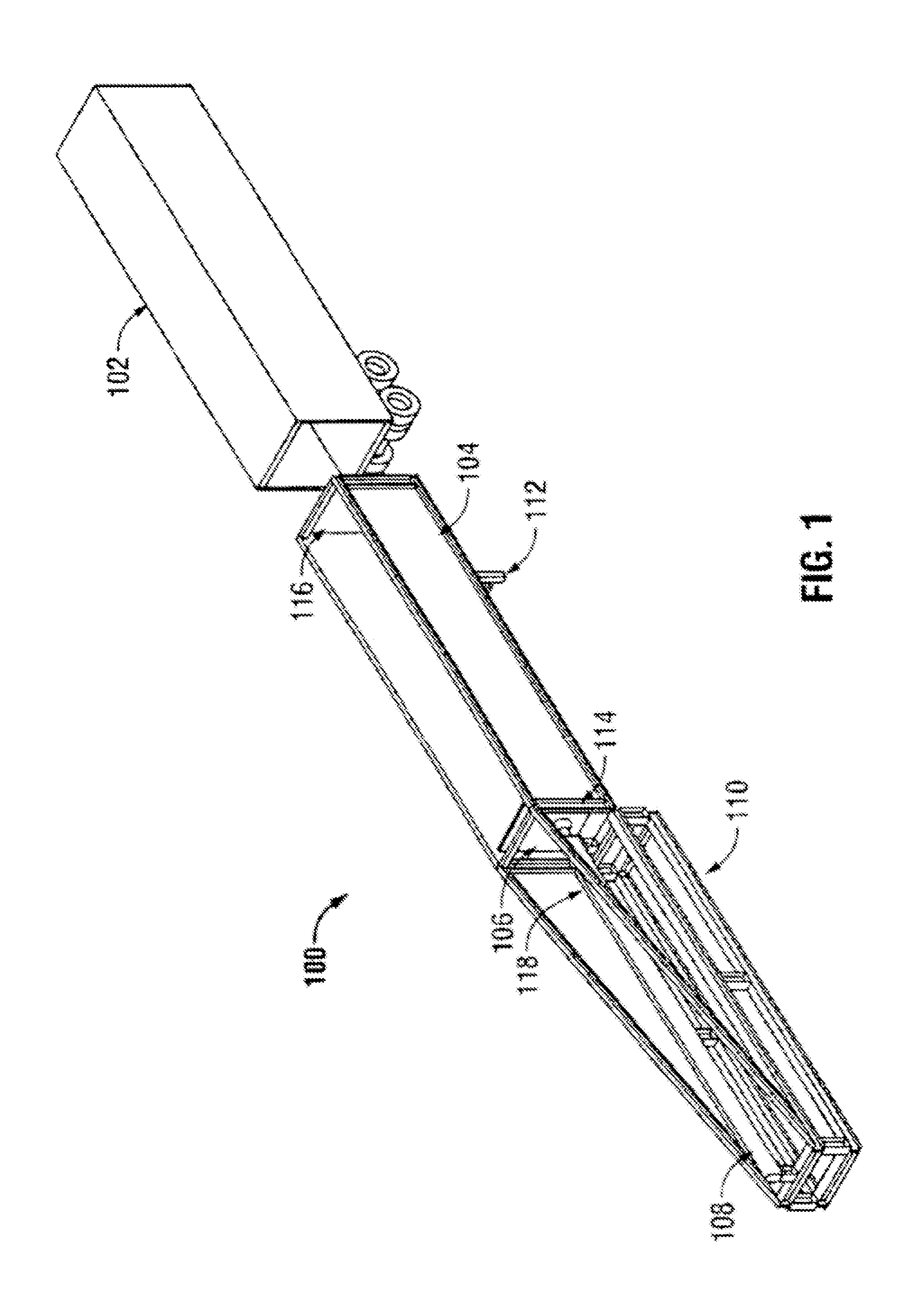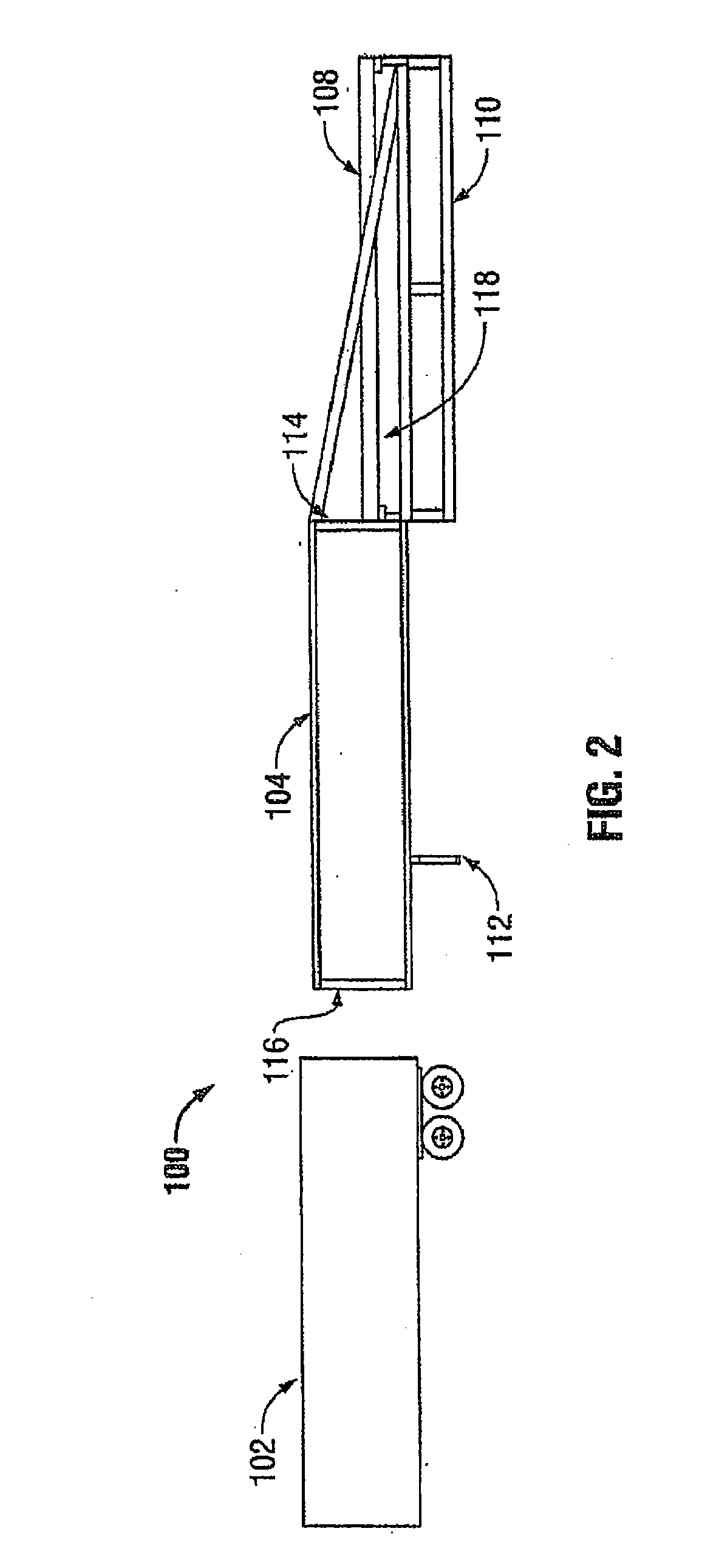Methods and apparatus for freight container loading
a freight container and container technology, applied in the direction of packaging, loading/unloading, storage devices, etc., can solve the problems of not all materials, however, being suitable for palletization, and many bulk materials being too large to fit within a pallet,
- Summary
- Abstract
- Description
- Claims
- Application Information
AI Technical Summary
Benefits of technology
Problems solved by technology
Method used
Image
Examples
Embodiment Construction
[0035]Referring to FIG. 1, depicted is a bulk material loader 100, according to an embodiment of the invention, and a container 102 mounted on a flatbed tractor-trailer (only the rear wheels of the flatbed tractor-trailer are shown). In one embodiment, the container 102 is a standard sized container used in the freight industry, and can be a standard 40′, the 40′ high-cube, the standard 20′, or another common sized container. The bulk material loader 100 comprises a hopper 104. The hopper 104 is suitable to withstand the loading and unloading of bulk material, including HMS, without being damaged. In one embodiment, the hopper 104 is constructed to support and withstand loads in excess of 66,000 pounds, although the loader of the present invention can be constructed to load materials of less than or greater than 60,000 pounds. Referring briefly to FIG. 2 and FIG. 3, it is apparent that the height and width of the hopper 104 is less than, and preferably slightly less than, the intern...
PUM
 Login to View More
Login to View More Abstract
Description
Claims
Application Information
 Login to View More
Login to View More - R&D
- Intellectual Property
- Life Sciences
- Materials
- Tech Scout
- Unparalleled Data Quality
- Higher Quality Content
- 60% Fewer Hallucinations
Browse by: Latest US Patents, China's latest patents, Technical Efficacy Thesaurus, Application Domain, Technology Topic, Popular Technical Reports.
© 2025 PatSnap. All rights reserved.Legal|Privacy policy|Modern Slavery Act Transparency Statement|Sitemap|About US| Contact US: help@patsnap.com



